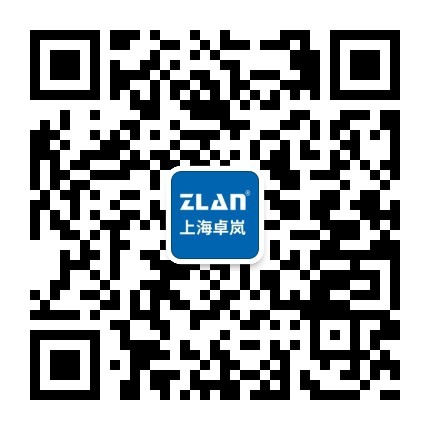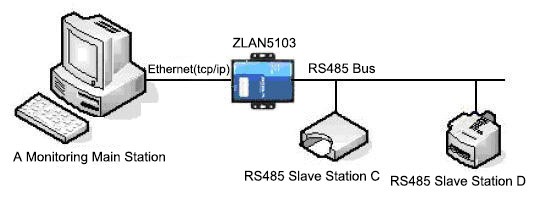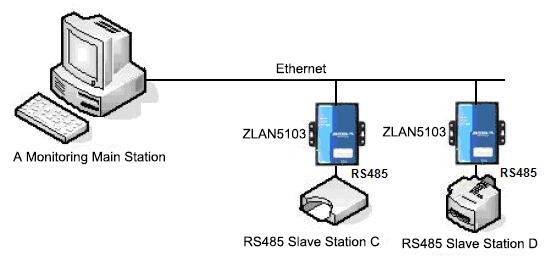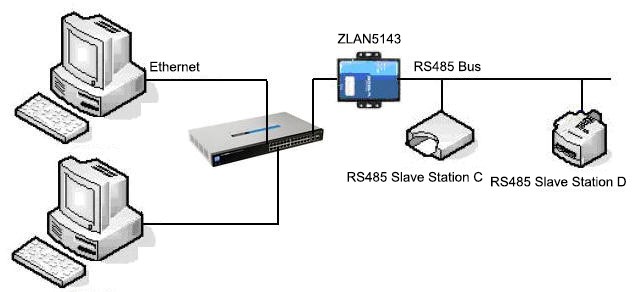- +86 13512168749
- oversea@zlmcu.com
- Buy Online


This article mainly introduces the network system structure of 485 to TCP/IP, as how many wiring methods there are after 485 TCP/IP, and their characteristics. 485 to TCP/IP can be implemented using either the serial port server in figure 1 or the embedded module in figure 2. RS485 to TCP/IP needs to be implemented because:
1). Utilize existing Ethernet network facilities. Although RS485 can also use the Ethernet twisted-pair (five types of shielded wire), but RS485 need occupy twisted-pair alone and cannot share with Ethernet, this requires rewiring in practice, cannot use the existing network. After using 485 to TCP/IP, it can be combined with networks of existing office and factory to save money. Moreover, this TCP/IP network can be extended through switches and routers.
2). Use WAN to realize remote monitoring. When 485 is converted to TCP/IP, remote monitoring can be achieved using the existing Internet, metropolitan area network, and WAN.
3). Replace multiple device CARDS to realize multiple serial ports of a computer. The virtual serial port drive of ZLAN can simulate multiple serial ports (COM port). Users can realize a network card to control thousands of serial port devices without extending the serial port.
After 485 wiring structure is upgraded to TCP/IP, ZLAN technology can be divided into three ways: bus structure, multi-device structure and multi-host structure, depending on the system structure. The multi-host structure will be introduced later, here mainly introduces bus structure and multi-device structure.



Figure 3 represents the usual RS485 system structure, which contains a monitoring host and many sets of RS485 devices, converting to TCP/IP has two ways, respectively are bus structure of figure 4 and figure 5 multi-devices structure. In the bus structure, the RS485 line in the system connected to the monitoring host is converted to the network line by the ZLAN5103 converter, and the network line can be virtualized as a serial port such as COM5 by using the ZLAN ZLVircom driver. The software system works like figure 3; In the MULTI-device structure, convert the network line to RS485 in where close to the device, each device requires a ZLAN5103 converter, ZLVircom supports bind two ZLAN5103 on a virtual serial port, that is to say, in the system there are two converter but are corresponding the virtual serial port COM5, the software works same as in figure 3.
Neither the bus nor the multi-device mode don’t affect the operation of the software of the original system. In comparison, the cost of multi-device mode is higher because it needs multiple ZLAN5103, but it supports application of decentralized devices, and multiple RS485 terminals are connected to the system via TCP/IP. ZLAN software and devices also support two ways to mix and use.
Users familiar with RS485 know that there is usually only one host on the RS485 bus, and the host is generally used for polling, the way of slave station answering. It is generally difficult to implement multiple monitoring hosts on the RS485 bus. However, multi-host monitoring is indeed necessary for certain occasions, and ZLAN5143 of ZLAN can realize this function. Can realize 100 monitoring host simultaneously monitoring. The multi-host mode is shown in the figure.

